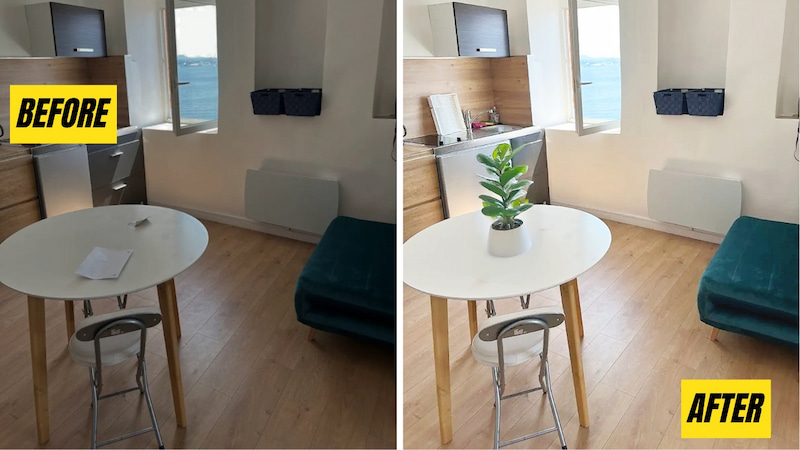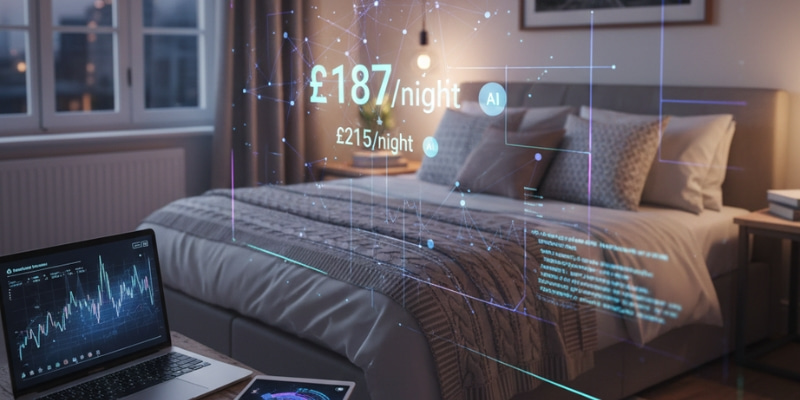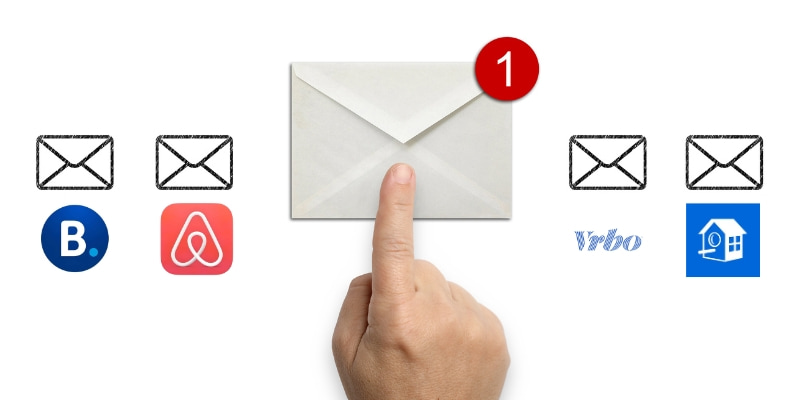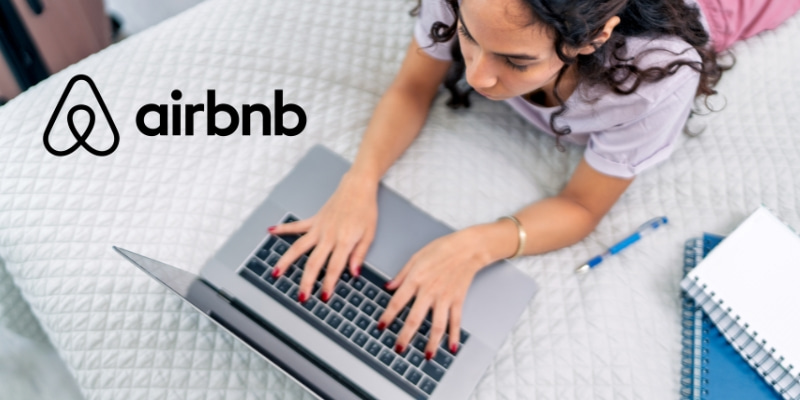In the world of short-term rentals, a silent revolution is underway. For years, hosts had to juggle between personal obligations and welcoming guests at the door. But those days are ending. The rise of the Airbnb automated check-in (sometimes called self check-in or contactless check-in) is transforming hosting in the US. This is not just a technological convenience. It responds to a deep shift in traveler expectations. Guests who use mobile check-ins at hotels, digital boarding passes at airports, and QR codes at restaurants now expect the same flexibility when staying in an Airbnb. Hosts, for their part, are looking for ways to save time, reduce stress, and manage multiple listings professionally.
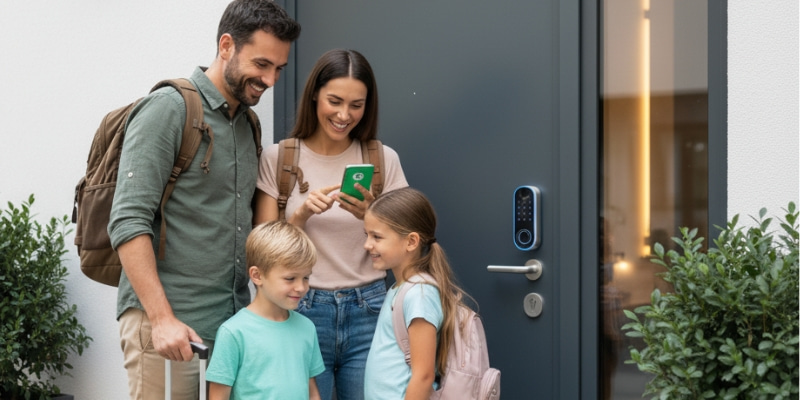
Tools like Nowistay combine an AI co-host with a digital welcome guide. Guests receive their unique access codes, instructions, and local tips automatically.
Get startedThe numbers speak clearly. The US market for short-term rentals is highly competitive. Cities like Miami, Austin, Los Angeles, and New York show occupancy rates between 55% and 75% depending on the season. In such a crowded marketplace, every operational detail matters.
Consider the example of a host managing three apartments in Austin. Before automation, she spent nearly two hours each day coordinating arrivals and departures, often late into the night. By installing smart locks and automating Airbnb messages, she reduced this to just thirty minutes daily. The time she saved was reinvested in improving her listings and growing her portfolio.
On the traveler side, the change is just as striking. A business traveler arriving in Los Angeles after a delayed flight at midnight does not want to wait for a key exchange. A family landing in Orlando after a long international trip prefers to head straight to the rental. In reviews, guests frequently mention how much they appreciate smooth, independent access. In fact, AirDNA data shows that properties offering self check-in tend to attract more bookings and achieve higher ratings.
Travelers in 2025 prize autonomy. They want to arrive on their own schedule without relying on the host's availability or a concierge service. This is especially true for digital nomads, business travelers, and families with children.
A frequent Airbnb guest put it simply: “When I land late after a long trip, I don't want to coordinate with anyone. A code and clear instructions are all I need.”
For hosts, this expectation is both a challenge and an opportunity. Delivering a seamless Airbnb contactless check-in means fewer headaches, fewer last-minute calls, and a stronger reputation on the platform.
At its core, an effective automated check-in relies on three elements: access, instructions, and communication.
The first step is choosing the right access method. In the US, smart locks have become the preferred solution. Models like August, Yale Assure, Schlage Encode, or Igloohome integrate with platforms such as Airbnb or third-party tools like RemoteLock and Operto. They generate temporary codes for each stay and deactivate them automatically after checkout. This is safer than hiding keys under a doormat or reusing the same code repeatedly. Lockboxes remain an option for budget-conscious hosts, but they lack the traceability and security of smart devices.
The second element is clear instructions. Too often, confusion begins not at the door but in finding the door. Effective Airbnb check-in instructions go beyond the street address. They include nearby landmarks, details like “gray townhouse with a red mailbox, second floor,” and ideally photos or even a short video walk-through. Digital tools such as Nowistay make it easy to create a perfect Airbnb welcome guide that guides guests step by step. For international travelers unfamiliar with the neighborhood, visuals can prevent almost all misunderstandings.
The third element is communication. Timing is everything:
Airbnb’s built-in scheduled messaging is useful, but for hosts managing several listings, dedicated automation platforms such as Beds24, Guesty, or Hospitable offer more flexibility. They allow you to personalize messages, include attachments, and even adjust tone depending on guest profile.
Hosts sometimes underestimate the liability of poor security practices. Reusing the same access code for multiple stays or leaving spare keys in predictable places exposes both property and guests to risk. This can become a serious issue.
The solution is simple: generate unique codes for each guest, share them only when necessary, and deactivate them after checkout. Smart locks make this easy, and they also provide a digital log of entries in case of disputes. For both hosts and guests, this transparency reinforces trust.
Automation does not mean impersonality. Guests notice the difference between a generic template and a personalized message. A host who mentions the local weather, recommends a neighborhood coffee shop, or addresses the guest by name adds a layer of warmth that technology can amplify rather than erase.
For instance: “Hi Emily and Jack, welcome to Austin! Your code will be active from 3 PM today. By the way, the food truck two blocks away was just featured on a local TV show. Worth checking out.”
Small gestures like this turn a functional process into a memorable experience, and they remain fully compatible with automation.
You may be interested in this article: Airbnb message templates for automation: 15 proven examples for hosts
How can you know if your Airbnb self check-in is working? Key performance indicators provide the answer:
Collecting structured feedback is also valuable. A simple post-stay question such as “Was the check-in process smooth?” gives insights into potential friction points and helps you refine instructions.
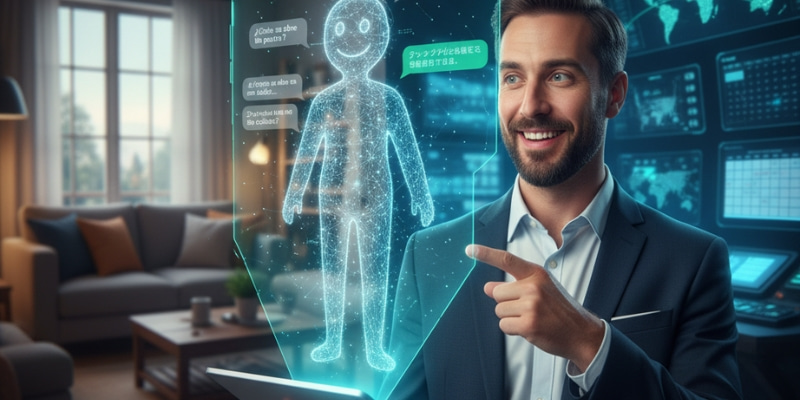
The next evolution will be AI-driven personalization.
Already, solutions like Nowistay’s AI co-host handle the majority of guest requests automatically, adapting responses to each reservation. They can explain access steps, troubleshoot problems, and recommend local services without host intervention.
Beyond individual rentals, integration with smart city ecosystems is on the horizon. Imagine a guest arriving in San Francisco: the check-in message not only provides the access code but also a direct link to public transit schedules, restaurant discounts, or neighborhood maps. Automated check-in will become the entry point to a fully connected travel experience.
Implementing Airbnb automated check-in is more than a way to save time. It is a strategic decision that directly impacts guest satisfaction, reviews, and revenue. In a market as competitive as the US, where small differences influence booking decisions, smooth and secure self check-in can make the difference between a four-star review and a five-star review.
For single-property hosts, a lockbox and Airbnb’s messaging tools may be sufficient. For those managing multiple listings, smart locks, integrated platforms like RemoteLock, and AI assistants offer the scalability and professionalism that today's travelers expect.
The investment pays off quickly. Hosts gain freedom from repetitive tasks, reduce stress, and deliver the kind of guest experience that drives repeat bookings. Travelers gain autonomy, security, and peace of mind. The result is a win on both sides.
So the question is not whether to adopt Airbnb self check-in, but how quickly you can implement it to stay ahead in 2025.
With Nowistay, combine an AI co-host and a digital welcome guide to give guests everything they need: unique access codes, clear instructions, and personalized local tips. You save time, reduce stress, and keep delivering five-star stays.
Get started

